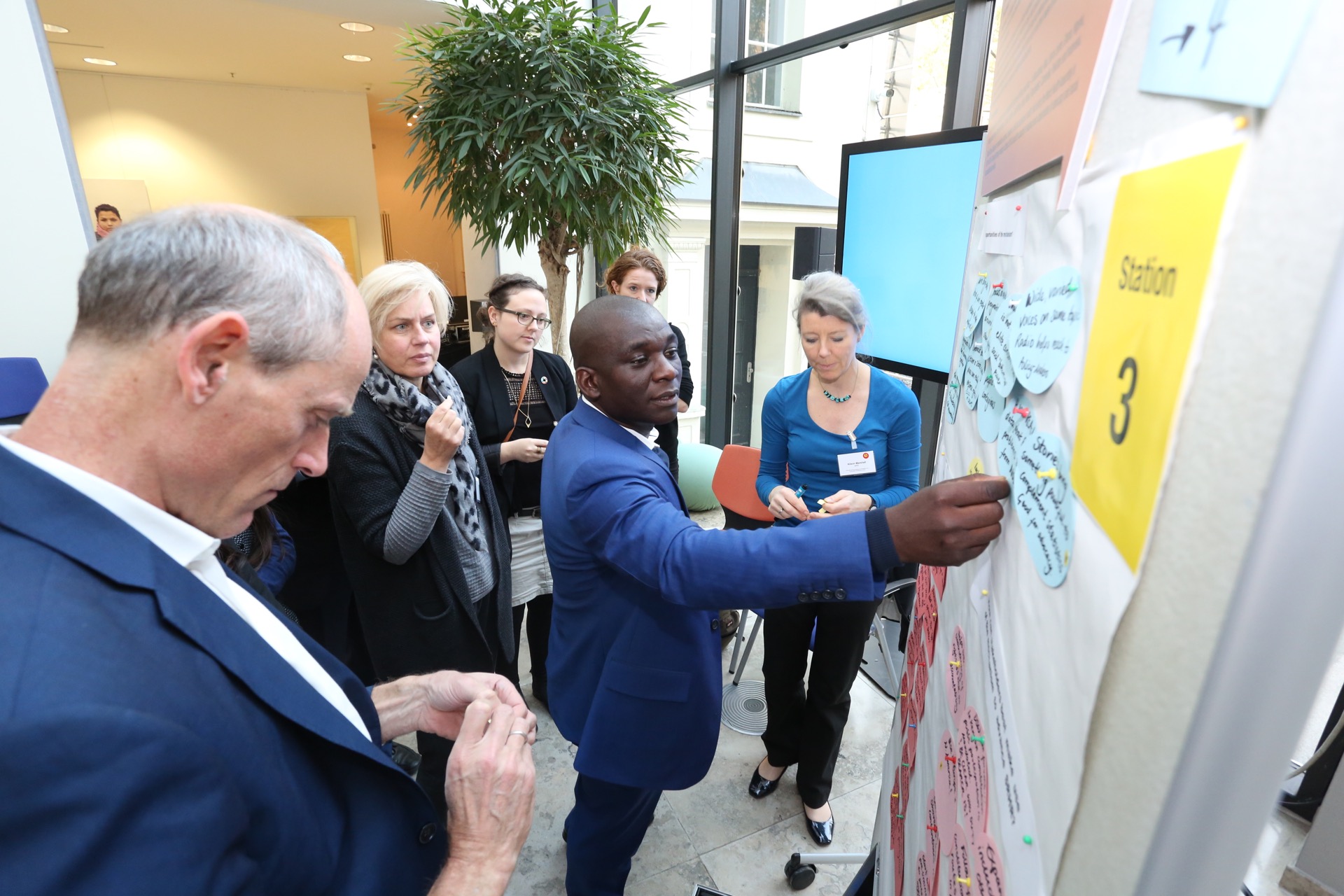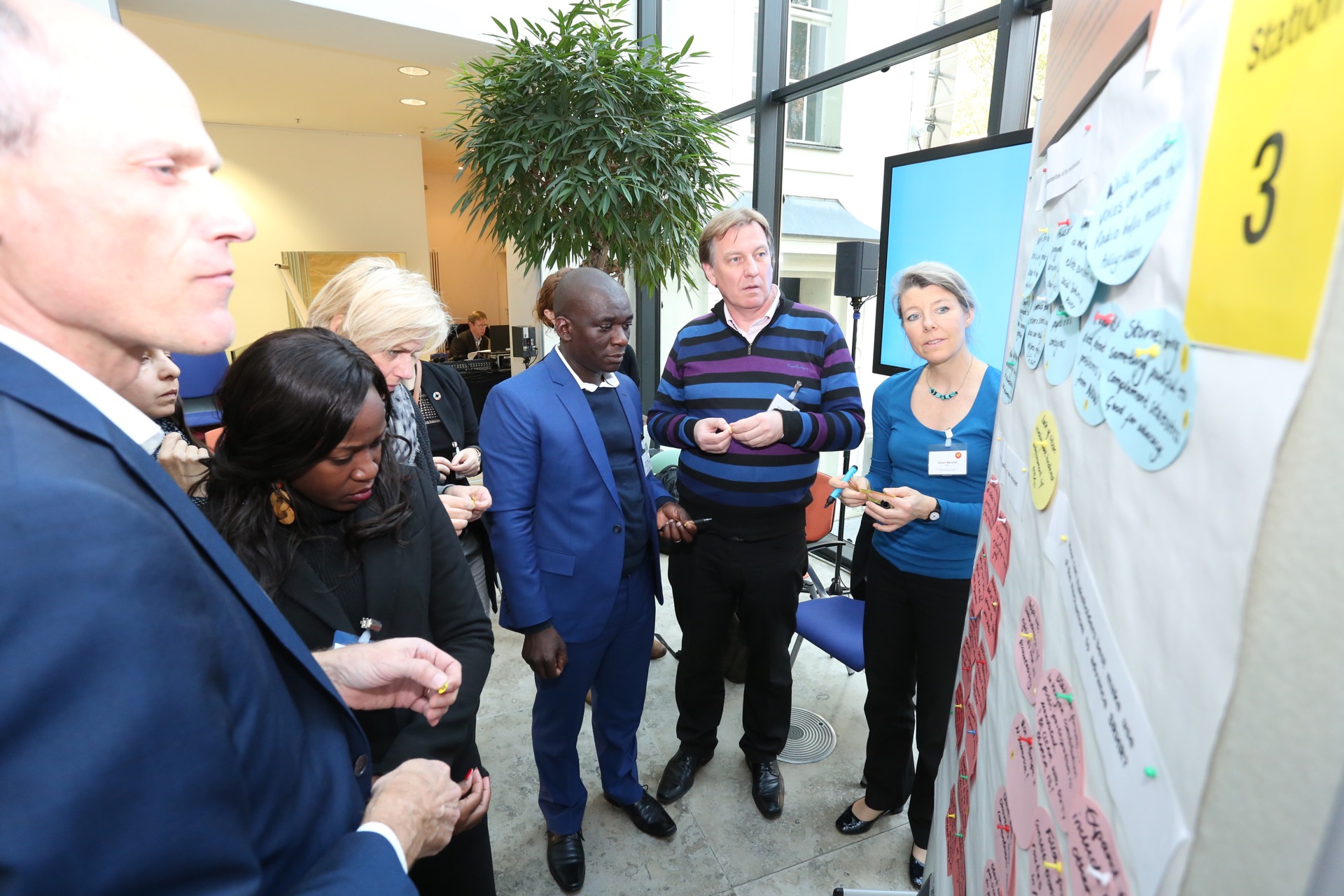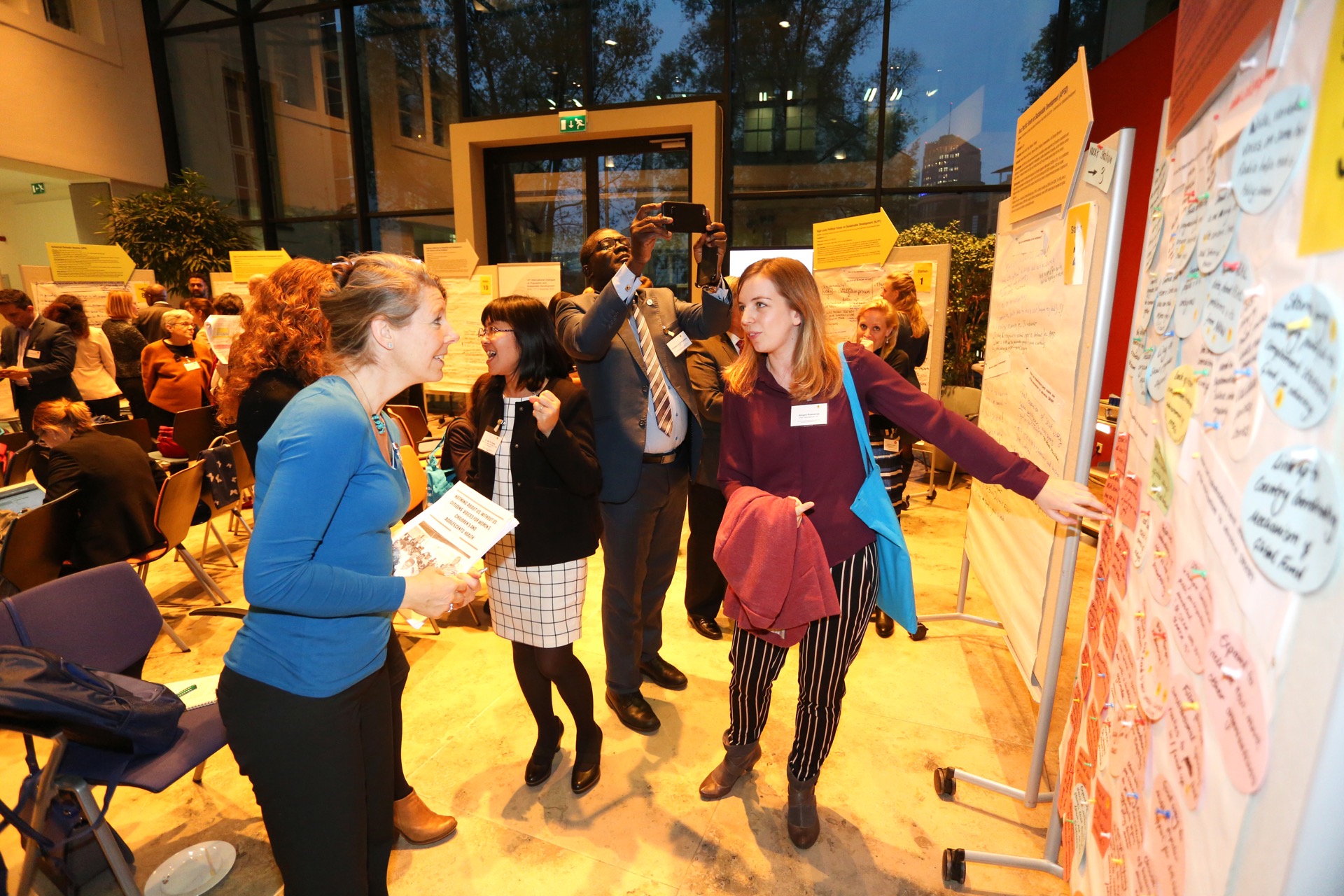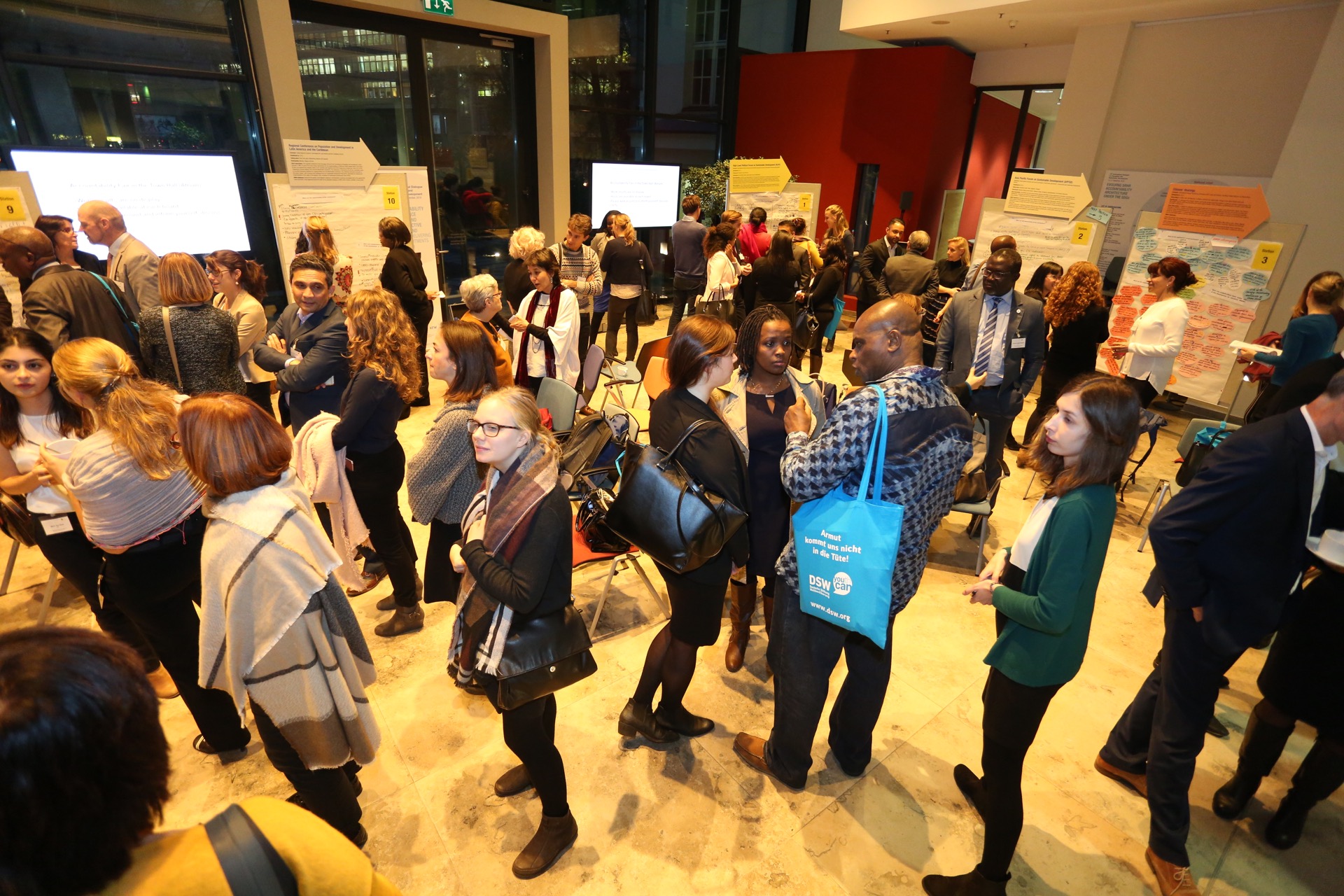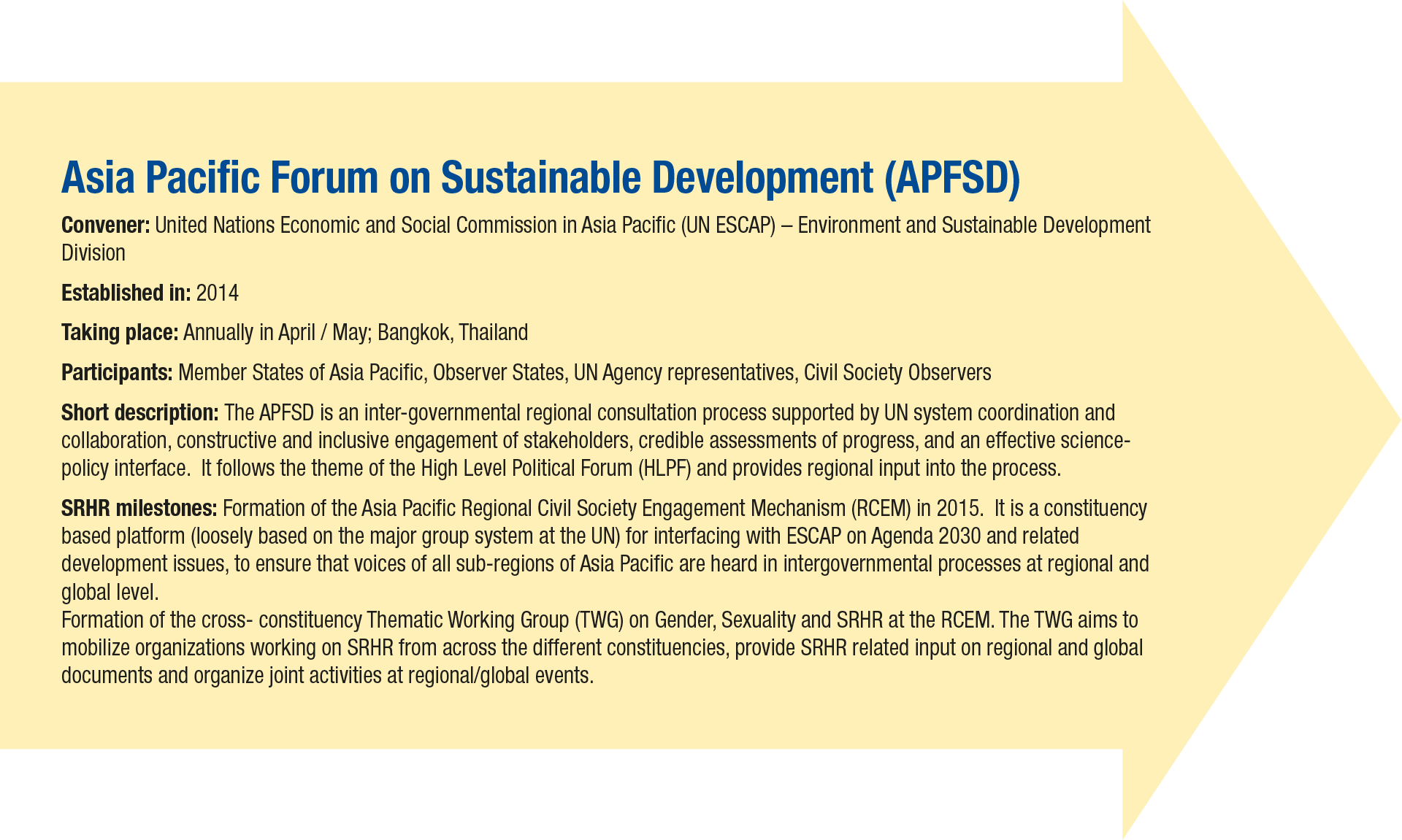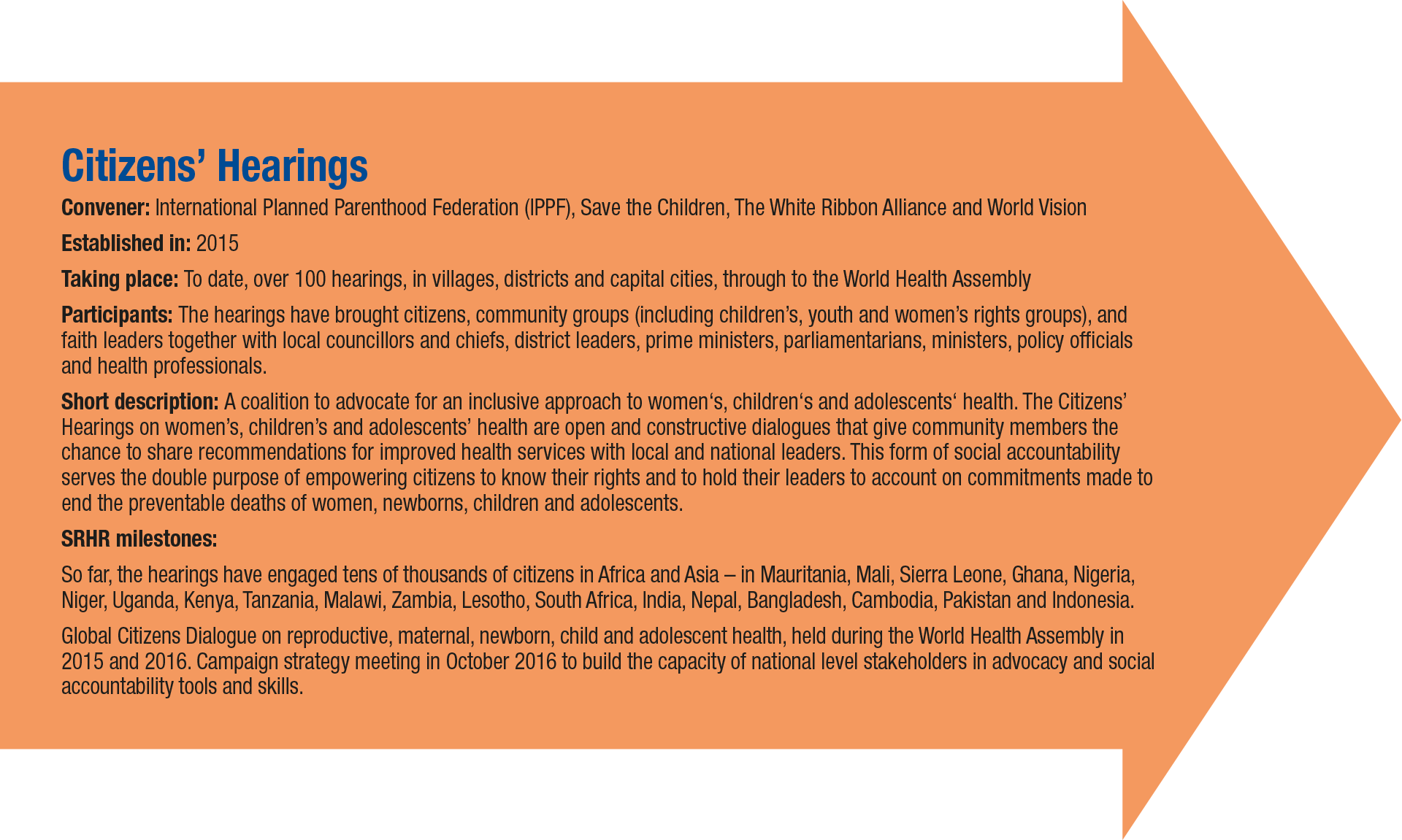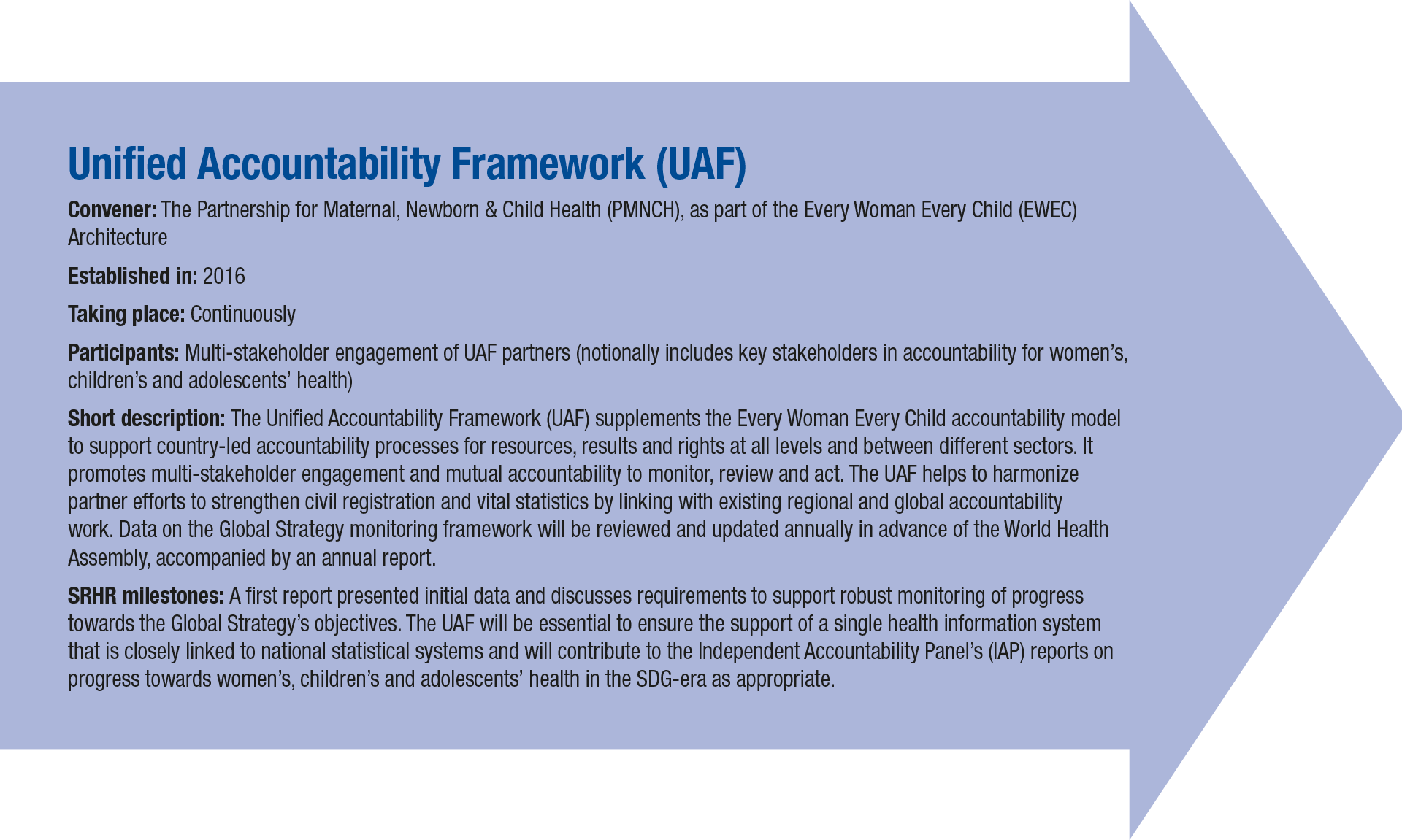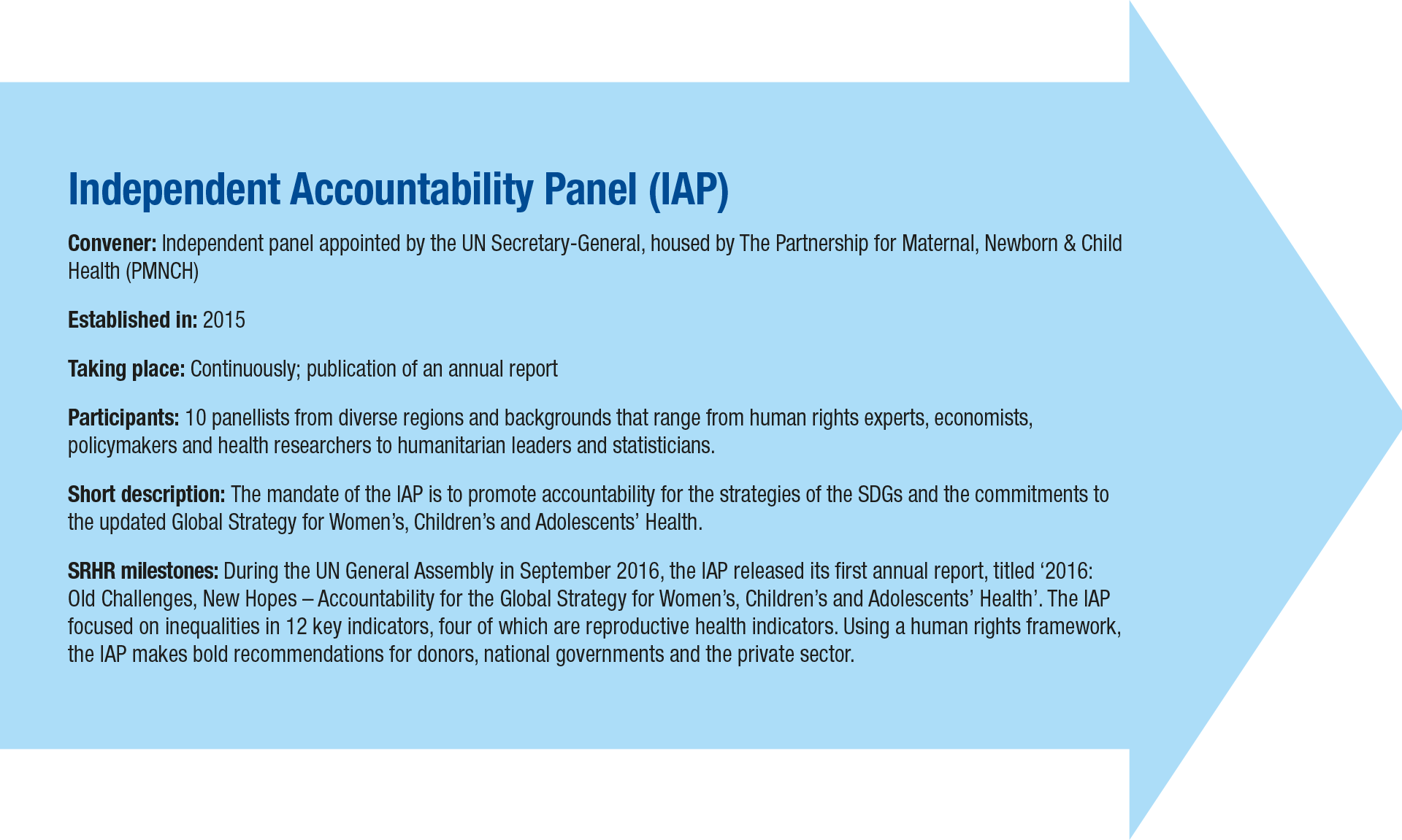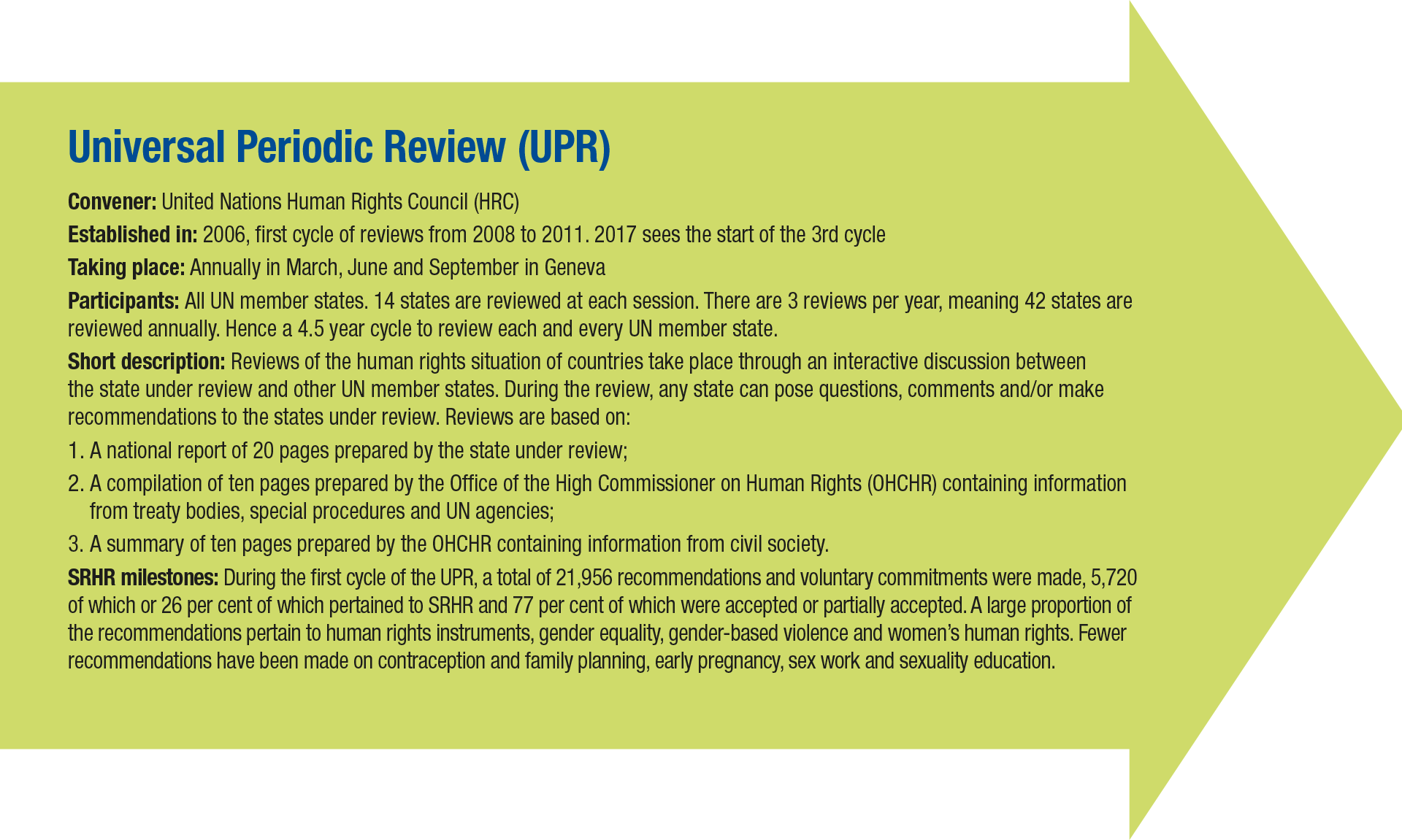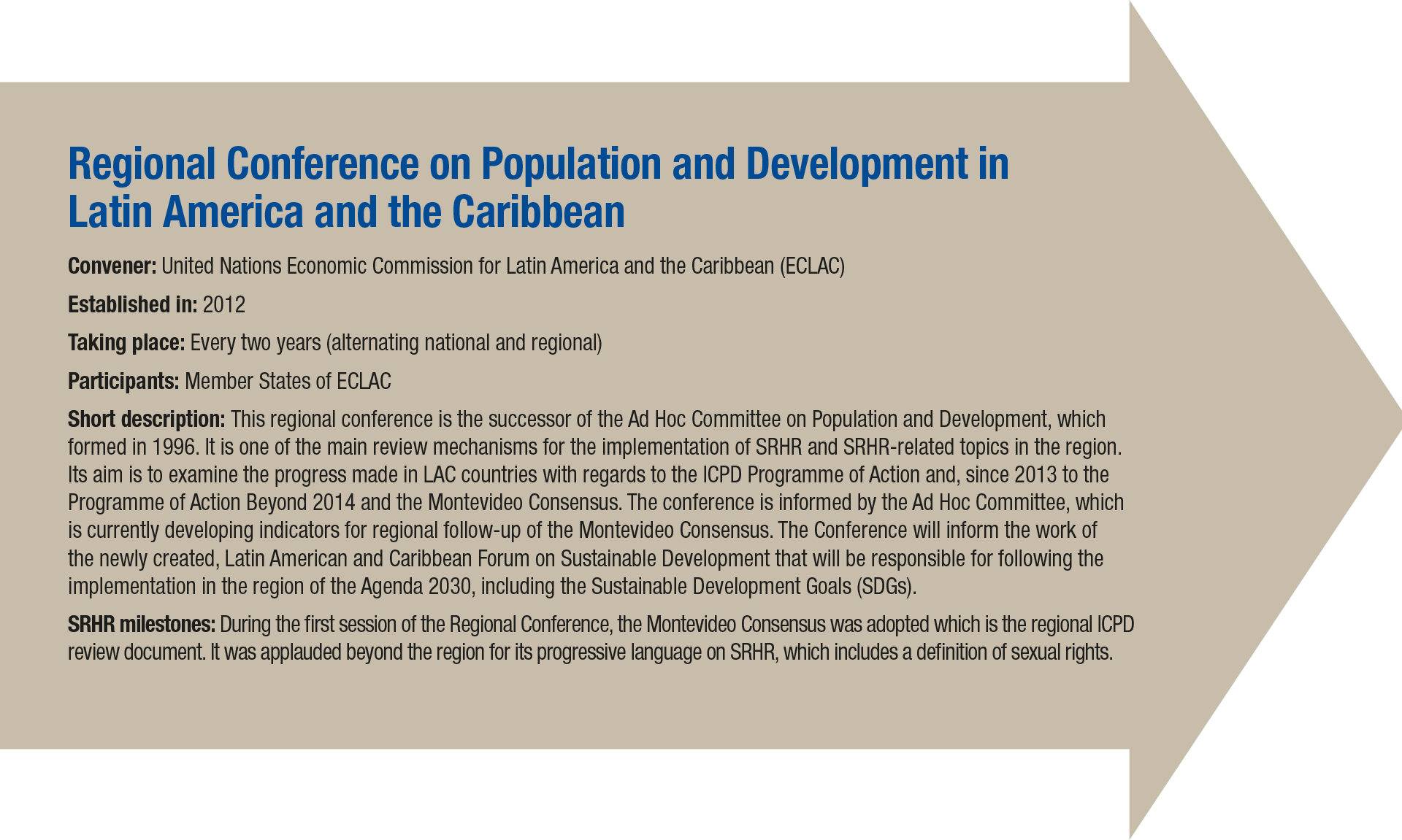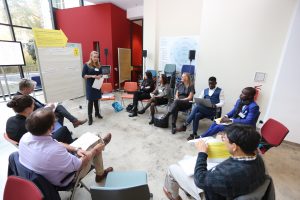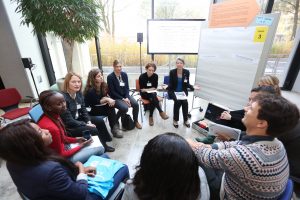Reflections on existing regional and thematic accountability mechanisms for the achievement of SRHR-related goals
Rotating Discussion and Accountability Fair
In the afternoon, delegates were assigned to groups facilitated by their peers, where they could more deeply assess 9 different review mechanisms that pertain to the implementation of the 2030 Agenda. Looking at global, regional and national review mechanisms, participants were encouraged to identify opportunities and challenges presented by each mechanism and share ideas about how stakeholders can best make use of the mechanism in order to advance Sexual and Reproductive Health and Rights (SRHR).
Snapshot of selected SRHR review mechanisms
While some of the mechanisms are relatively new, others have been in place within the UN system for many decades. Some international review mechanisms on global and regional levels provide a space for peer-to-peer learning between states as well as political guidance (e.g. HLPF, CPD, APFSD, UPR). Others have the advantage to add an independent voice to report on progress of policies, practices and the current state of implementation, thus promoting accountability (IAP). Discussions on the different review mechanisms revealed synergies between mechanisms and a need for alignment in terms of reporting for the 2030 Agenda. Mechanisms to strengthen country-led accountability processes promoting multi-stakeholder engagement and mutual accountability are already being developed (UAF). The presented national review mechanisms enable civil society participation, thus creating greater accountability between governments and their population (Citizens’ Hearings).
The following review mechanisms were discussed


